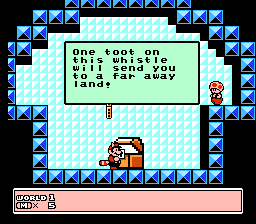This is the first part of an essay I've been working on. I decided to split it in half to make it a little more readable. I'll try to have the next half up later this week or early next week. Let me know what you think!
Two of my favorite pastimes are videogames and Magic the Gathering. I’ve been playing videogames since I was eight and I picked up MTG at the tender age of eleven. After over a decade of playing and loving MTG, I can firmly say that the world’s number one trading card game has had a profound effect on how I think about games and it has taught me a ton of valuable lessons about game design philosophy. There are a host of lessons and philosophies I could translate from MTG to videogames and back again; but, the philosophy that I find the most interesting at the moment is lenticular design.
Lenticular design is a game design philosophy that was coined by Mark Rosewater, the lead designer of MTG, to refer to Magic cards that “appear on their surface to be very simple, but once you understand more about how to use them, they become more complex.” Common wisdom would dictate that most, if not all, cards would become simpler when seen through experienced eyes since experienced players can shortcut a lot of things that new players have to deliberately think through. However, Rosewater found that this assumption did not hold true in practice. He pointed out, “some complexity is hidden, because it requires certain knowledge to even be aware of it.” For MTG cards, the type of complexity that is often hidden to new players on lenticular cards is strategic complexity. Rosewater writes that, “The real ghost of complexities for less-experienced players is strategic complexity. Because it requires a lot of knowledge to understand context, strategic complexity can take players quite a while to start seeing.” Thus, since new MTG players are often unaware of huge swath of cards and interactions, they are not burdened with some of the decisions that experienced players can easily see. For MTG, lenticular cards are sort of an accessibility and depth Holy Grail: they are cards whose complexity and depth scales with a player’s experience level. Consequently, lenticular cards appear accessible and simple to new players who need simplicity, and they offer complex choices to experienced players who crave depth, thereby fulfilling the desires of one group without trampling on the needs of the other. While I have never heard this design concept coined in a videogame context before (save for when I wrote on this concept), I do believe that there is a company that has mastered this form of design: Nintendo.
Nintendo is regarded by many as the Disney of videogames for plenty of reasons: from its family friendly image to its gaggle of reliable and constantly reused franchises. However, the biggest similarity that I see between the two companies is their ability to make content that simultaneously appeals to kids and adults. Disney maintains this balance through a mix of clever writing, music, and nostalgia, and Nintendo liberally skims from the same playbook. While it is easy to fall into the trap of dismissing Nintendo’s success as purely the result of pandering to nostalgic fans, Nintendo’s core design philosophies are as responsible for its fan acquisition and retention as its mustachioed superstar and his green dinosaur. I believe that one of the secrets to Nintendo’s masterful blend of accessibility and depth is in its de facto use of lenticular design. Though I doubt that many Nintendo developers are familiar with this heretofore MTG specific design concept, many of Nintendo’s core franchises have mechanics and ideas that make a lot of sense when viewed through the lens of lenticular design. From Mario to Kirby to Super Smash Bros to Captain Toad, each of these franchises makes tremendous use of lenticular design to keep themselves accessible to newcomers and engaging to experienced players.

One of the key factors to using lenticular design is hiding complexity in organic ways, rather than through artificial restraints. So gating complex abilities or levels behind constructs like leveling systems or story progression is not lenticular design. In keeping with the principles I’ve described Nintendo tends to be a bit subtler when it hides complexity. For example, Nintendo platformers utilize things like hidden level exits to hide complex mechanical interactions or unintuitive level design from new players. For a new player, the main objective of almost any level in a Nintendo platfromer is to run to the right until she/he reaches an exit. It is entirely possible to beat a Mario or Kirby game by sticking to the main path and there is no penalty for missing any secret content. Instead, there is a bonus reward for players that are clever enough to perceive the secrets hidden in plain sight in Mario and Kirby levels. A new player often has little ability to recognize potential hidden exits or secret rooms. Yet, those rooms constantly lurk in unexplored pipes, behind breakable blocks, and high in the clouds. Nintendo brilliantly allows experienced players to immediately pursue the increased challenge of finding every Warp Whistle and Secret Switch, without beating new players over the head with the fact that there are challenges they cannot yet overcome. Rather than forcing every player down one difficult and confusing path, Nintendo platformers hide many of their best challenges far enough away from the main path that players (that do not use FAQs) naturally stumble across them as they replay old games and improve their skills. As a result, when a new Mario game comes out experienced players know to be on the lookout for secret exits and other obscure content, while new players enjoy a platformer that is challenging but not daunting. Mario games are beloved by people of all ages and experience levels because their complexity and difficulty scale with the player to a certain degree, no difficulty slider required.
-All of Mark Rosewater's quotes were pulled from this article: http://archive.wizards.com/Magic/magazine/Article.aspx?x=mtg/daily/mm/293

Log in to comment